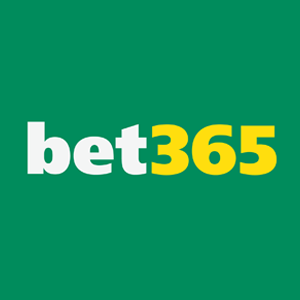What is a parlay bet? All Parlay Types Explained
Parlay bet (Accumulator Bet) is one of the exciting bets at sportsbooks, often awarding big prizes with bigger risk to the punters when they win. Therefore, it can be said that it is an attractive bet option for those who love risky bets.
Whether you want to bet one or more two parlays in search of prizes, there are different ways to place your bets using Moneyline odds, Over/Under, or spread bets. Therefore, whether you are a novice or a seasoned punter, this article will help you understand the definitions and properties of parlay bets.
What is a Parlay?
Parlay is straight bets linked together to produce a more significant payout, but gamblers must win every bet on the par to receive the winning fund.
In particular, as the bookmakers add more tournaments to the odds, the payouts will become larger and larger.
Bettors may optionally add bets to the parlay (usually 2 to 10 chances). It should be noted that parlay bets do not collect on a push, but the punter's selection is only cleared, or the parlay bonus is reduced accordingly.
Example: If you think Juventus (+4) and Liverpool (-6) will include the tournament spread into the UEFA Champions League Final, instead of risking $10 on individual bets, the punters can combine them and bet out $10 for a payout of about 2.65x the bet.
Therefore, several possible outcomes for a $10 parlay bet include:
- Both teams include: Win ($26.50);
- Juventus cover, Liverpool don’t: Loss (- $10);
- Liverpool cover, Juventus don't: Loss (- $10);
- Both teams don't cover: Lose ($-10).
Therefore, the only way to win is for both teams to win, but the punters will not be penalized if they lose both bets compared to losing only one. Instead, the chance is considered lost as soon as one of the gamblers' parlays loses.
In addition, punters can also parlay on more than two teams with the same rules. For example, if there are only four teams in a five-team parlay, it will be considered a loose result, as if only one of the five teams was covered.
All Popular Parlay Bet Types
Besides the standard parlay, bookmakers often offer one or more variations, and they each have their appeal. Some of the more popular parlay bets include:
In sports betting, teaser bets are a variation of parlays that allow punters to move the point difference or Over/Under a specified amount of points as beneficial.
However, multiple bets are required to be tied together as part of the overall teaser with all bets involved having to be won for the bet to win. Usually, teasers involve two teams, but some bookies allow bettors to bet up to 10 in a teaser.
Example: During the Super Bowl, the Consensus Market numbers go up as the Miami Dolphins -4 with over/under 54.5 according to Pro Football Reference.
Tease Miami Dolphins and Under offers the following bets:
- Miami Dolphins +4
- Under 48.5
While Under 48.5 went home with ease since the game landed above 40, the Miami Dolphins +4 also failed as they lost 31-9. So this teaser lost, as the legs drew 1-1.
Pleasers
Sometimes some bookmakers will offer a parlay variant called pleasers which works exactly the same way as teasers by moving the line against you. To be clearer, they are just reflections of teasers. As a result, the odds in pleaser are often not as attractive as standard parlays. But, conversely, the payout will be higher to compensate for the increased risk.
For example: Suppose Arsenal are playing MU with an initial spread of -6.5 over Arsenal and +6.5 over MU. The more popular Arsenal gets the score except out on the field and creates odds around -110.
If you want pleasers, you can give Arsenal a more significant disadvantage, say -13.5 points, and you will need Arsenal to win by 14, but this bet will come with better odds, such as + 160.
Now, to win the pleaser bet, you will need to win these two bets. One loss can be counted as a loser to your bet.
Round Robin
Round Robin is placing small multiple parlays one large event at once, and it is just a way to simplify the execution of numerous parlays. Punters will choose anywhere from 3 to 8 teams or total to enter the Round. They will then select how many groups or totals they want to draw together for the Qualifier.
Example: You can choose eight teams and tie matches with as many three-team combinations as possible from the list given by the sportsbook after clicking on Round Robin. Group combinations will determine the number of different skewers. Let’s look at our Round Robin 2 combination example:
Oklahoma City -3 -7.5 vs. Jets
Ravens -6 vs. Steelers
Golden State +4 vs. Broncos
If you decide to place a bet with $10 each parlay, then you will risk $30 for your bet. The sportsbook will give you the estimated payout. In this case, you win $36 for each parlay you win according to the sportsbook. However, since you bet with parlay, then you will have to cover more than 2 parlays to win the bet.
- If all three teams cover the spread and you hit all three parlays, you’ll win $78 ($36 x 3).
- If just the Raiders and Patriots cover, you’ll win one parlay, taking home $6 (win $36, lose $20).
- If only one team covers, you lose all three parlays, and lose $30.
How Does A Parlay Bet Work?
When betting on a parlay, bettors must combine more than one outcome into a single bet and correctly determine every chance to win. Bettors need to add each selection to the online betting slip as usual to place a bet. The payout can then be calculated using a fixed-odds chart, which is used when betting on totals or point spread (which gives a 50/50 chance at -110 odds). The chart can also show two paying options at +260 and three options at +600.
Example:
In a posterior parlay bet, assuming that the teams in each game have an almost even 50/50 chance of winning. Then, most bookies offer a 2.6:1 payout for two-game parlay, meaning a $100 bet that correctly predicts both outcomes can pay $260 ($160 profit plus initial $100 investment).
Instead, if gamblers bet $50 on each outcome, the winnings would be $50 x 2 = $100 plus an initial $100 investment for a final total of $200.
Finally, it can be seen that the parlay bet with a payout ratio of 2.6:1 pays out $60 more overall than the two individual bets.
While the payout is larger, the risk is also higher. That's why sportsbooks love to play in pairs. If you don't make it perfect, you lose. The greater the number of bets you place on a ticket, the higher the probability of failure but the greater the potential reward.
Also, a parlay becomes more complicated when there are different odds for each selection, especially when betting on the money line. Therefore, all initial bets will be placed on the first selection. If that selection wins, the profit will be the same as if the punters place a single bet.
3-leg Parlay Bet
More and more punters are opting for parlays because they have a high rate of return, which means that you only need to bet once to get a big payout. A diagonal rafter usually has a minimum of 2 legs and a maximum depending on the regulations of each bookmaker.
The larger the number of legs in the parlay, the higher the odds, the higher the risk for gamblers, and the harder it is to win. Therefore, puters usually can choose a 3-leg parlay bet (Trebles) or 4-leg parlay bet (Quady).
First, let's learn the simple 3-leg parlay bet on the same pay line. This is a favorite form of bet for many punters because they don't want to place long odds to win an amount less than the bet amount.
Example: If you choose 3-leg parlay for European Cup markets, including Chelsea @ 2.10, RB Salzburg @ 2.05 and Chelsea @ 2.00. Accordingly, 3-leg parlay odds = 2.10 x 2.05 x 2.00 = 8.61. Therefore, if you bet $10, when you win, you will get 8.61 x $10 = $86.1.
4-leg Parlay Bet
The 4-leg parlay bet is a bet on four teams, which means that the bonus amount is also increased exponentially. So, in addition to the higher probability of winning, the bonus amount is also significantly increased. As a result, many punters are more likely to choose 3,4 than 2.
Example: If betting $10 on four favorite teams with the odds for each group respectively:
Stoke @1.5
Arsenal @1.7
West Ham @1.8
MU @1.3.
If the above 4 teams all win, the punters get: 10 x (1.5 x 1.7 x 1.8 x 1.3) = $59.67. If 3 teams win, 1 team wins ½ of the parlay bet (e.g. Arsenal team) => Odds of getting 4 parlays won: 10 x (1.5 x 1.7 x 0.5 x 1.3) = $16,575. In case a team loses, the punters will lose $10 of their initial bet.
How Do I Calculate a Parlay Payout?
Each bookmaker will have a way of calculating parlay winnings, and punters can still do the calculations themselves by:
- Convert American odds to decimal odds;
- Multiply all decimal odds together;
- Multiply the result of Step 2 by the bet amount;
- Subtract your initial bet to get parlay odds.
Calculating the payout for a parlay bet involves multiplying the odds of each selection together and then multiplying that result by the amount wagered. To simplify this process, you can use a parlay bet calculator available on many betting platforms or online.
Online betting calculators can handle different odds formats (decimal, fractional) and automatically calculate potential payouts based on the odds entered. They make it easy to understand the potential return on your parlay bet before placing it, especially when dealing with multiple selections and odds.
Parlay Payouts vs. True Odds
Some new punters may be confused to see different potential payouts for the same contests; what should be kept in mind is that the number of "legs" in the parlay will affect the odds. Therefore, you need to be familiar with the rules of the bookmaker.
If the lines on the "legs" of the parlay move in the bookie's favor before the end time for the punters' parlay bets, the sportsbook will usually allow the bettors to cancel the chance and refund the stake. However, sportsbooks do not always tell about further movements. As a result, the odds and payouts will change based on the punters' type of parlay.
The Downside of Parlay Betting
Most experts consider parlays a poor way to bet on sports, at least in terms of long-term expected value. This is all because for a parlay bet to have a positive expected value (+EV), all or nearly all bets in the parlay series must have a positive expected value. So most parlay bets make it easier for the house to profit from the bettor's money.
Also, even if gamblers have a great betting system, the chances of winning every selection in parlays are pretty low. Mostly, complex bets like this usually don't have a positive outcome. Therefore, bettors should choose simple bets such as single bets.
Conclusion
Parlay bets are very risky bets for those who like to take risks. While the payouts are attractive, they are not as high as other forms of bets. They are only really profitable when you keep your bets to a minimum.
Still, it's a great way to diversify punters' bets and keep things interesting in both the short and long term, depending on the timing of the bets. However, parlay bets are a bit riskier than most straight, Moneyline, or total bets. Don't forget to diversify your betting portfolio and not just rely on long odds parlays. In short, when you understand the objective factors of the pros and cons of parlay bets, you will know what you need to do next.
Related bets you may be interested in:
|
Accumulator bet |
Forecast bet |
|
Tricast bet |
Reverse forecast bets |
|
Straight forecast bet |
Combination tricast |















.jpg)




